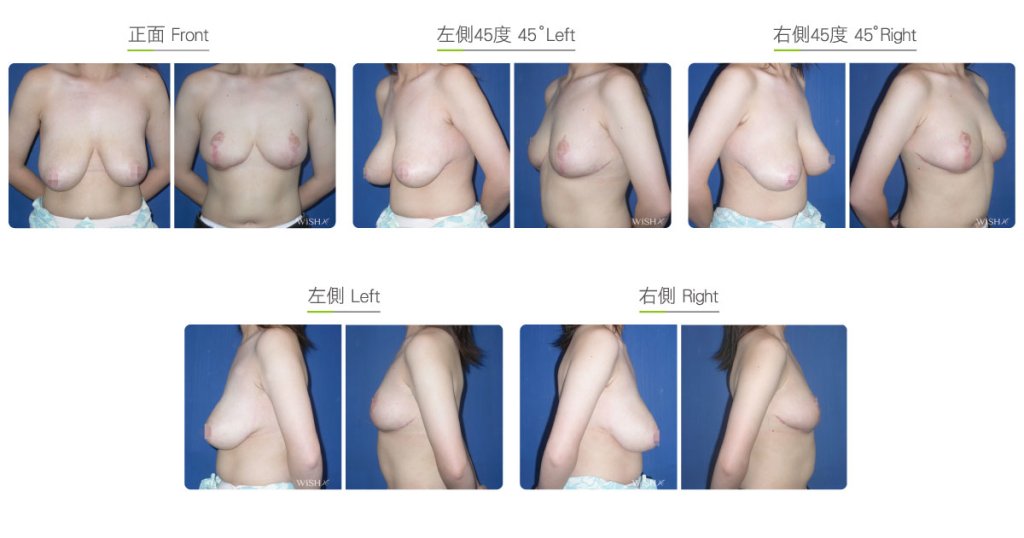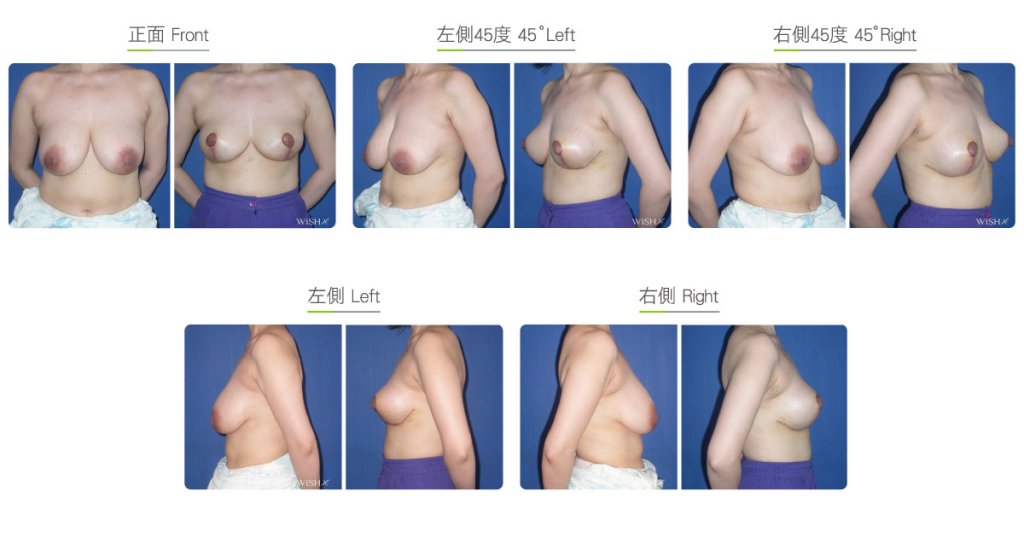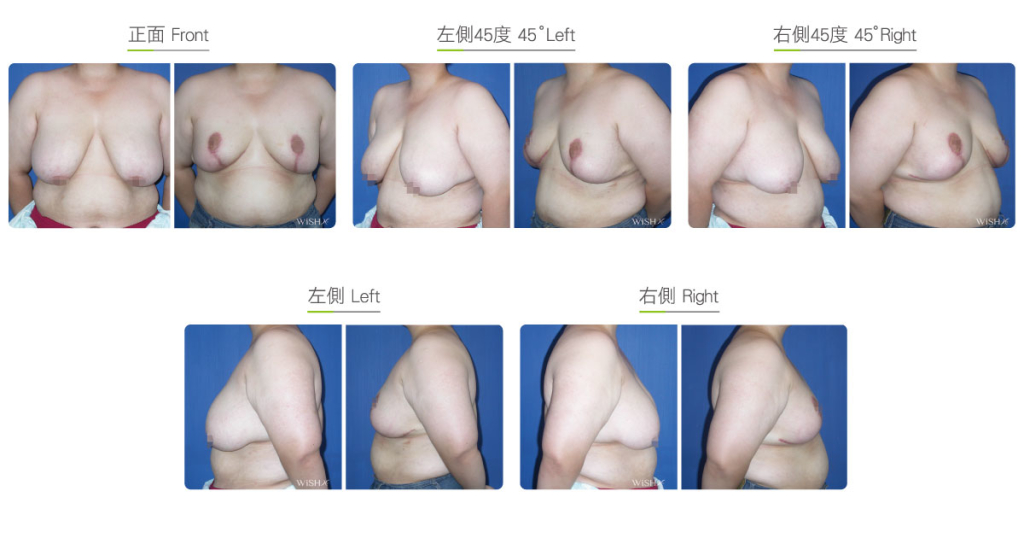Inverted T Scar Surgery
For patients with severe macromastia (F or larger cup size) and severe ptotic breasts appearing like a potato sack, a larger amount of the breast tissue needs to be removed. A traditional inverted T incision in combination with a periareolar lift is recommended to obtain more flexibility in reduction volume and shape remodeling. It uses a similar technique as inferior pedicle breast reduction, but a larger amount of the breast tissue is removed, including the medial, lateral, and lower parts. The inferior pedicle should be kept intact to ensure the blood supply to the nipple–areolar complex and lower-third of the breast tissue. Finally, the remaining breasts, nipple/areola, and pedicle flap are moved and stitched toward the vertical incision at the center of the breast to sculpt breast shape and perkiness. Loose and redundant skin can also be excised and tailored simultaneously. This surgery can remove most parts of the breasts and create the best result in patients with severe macromastia and ptosis. However, this is a relatively time-consuming procedure with the largest field of excision and the most damage to the breast tissue. There is a higher chance for inflammation or poor healing of the wound to occur. Moreover, the circulation to the nipple and areola could be damaged to cause necrosis or atrophy, leading to the loss of ability to breastfeed. The surgery would also leave a noticeable vertical scar between the nipple and inframammary fold, resulting in a longer period of wound and scar care. Thus, it is still less accepted by those who have scar tendency, especially in Asian patients.

Surgical conditions
Duration
- Type of anesthesia: General anesthesia
- Type of incision: Incision in the periareolar area, vertical and inframammary crescent-shaped line
- Recovery: Within 5–7 days
- Removal of stitches: 10–14 days
General instructions
No food and water on the day of surgery
- Smoking should be avoided for 1 month preoperatively to prevent its influence on wound healing.
- Excessive exercise and rubbing of the chest should be avoided for 1 month postoperatively.
- Smoking and alcohol consumption are not allowed for 3 months postoperatively to accelerate wound healing.
- Scar care should be continued for 6 months postoperatively.
Ideal candidates
- Those with severe and apparent macromastia or ptosis (F or larger cup size).
- Those with breast atrophy and severely loose skin.
- Those who require a massive degree of breast reduction (3 cups or more).
- Those who require a customized breast shape after breast reduction.
Possible complications
- Hypertrophic scarring
- Slow wound healing
- Infection or inflammation
- Breast lumps (temporary)
- Areola/nipple atrophy or necrosis
- Loss of nipple sensation
- Breastfeeding dysfunction
Surgical advantages
-
Large degree of breast reduction with the retention of some perkiness.
-
Effective removal of loose skin and restoration of skin elasticity.
-
Flexible resection or retention of breast tissues to control the degree of breast reduction.
-
Customizable breast shape.
Surgical drawbacks
-
Visible vertical scars on the front chest.
-
More postoperative pain and swelling.
-
Loss of nipple sensation.
-
Loss of breastfeeding ability.



